Deciding between managed IT services and in-house IT for your business involves considering various factors such as cost, expertise, scalability, and control. Here’s a breakdown to help you determine which option might be right for your business:
Managed IT Services
Advantages:
- Cost-Effective:
• Predictable Costs: Managed IT services typically operate on a subscription basis, providing predictable monthly expenses.
• Lower Initial Investment: No need for a large upfront investment in infrastructure or personnel. - Expertise and Resources:
• Access to Experts: Managed service providers (MSPs) employ a range of IT professionals with diverse expertise.
• Latest Technology: MSPs often have access to the latest technology and tools. - Scalability:
• Flexible Services: Easily scale services up or down based on your business needs.
• Adaptability: Quickly adapt to new technologies and changes in your business environment. - Focus on Core Business:
• Reduced Management Burden: Less time spent on IT issues allows more focus on core business activities.
Disadvantages:
- Less Control:
• Dependency: Reliance on an external provider can lead to less control over certain aspects of your IT infrastructure. - Security Concerns:
• Data Privacy: Entrusting sensitive data to a third party can raise concerns about data privacy and security.
• Compliance Issues: Ensure the MSP complies with relevant regulations and standards.
In-House IT
Advantages:
- Control:
• Full Control: Direct oversight and control over your IT infrastructure and policies.
• Customisation: Tailor IT solutions specifically to your business needs and industry requirements. - Immediate Support:
• On-Site Presence: Immediate response to IT issues and hands-on troubleshooting. - Security:
• Data Privacy: More control over data privacy and security measures.
• Compliance: Easier to ensure compliance with industry-specific regulations.
Disadvantages:
- Cost:
• Higher Initial Costs: Significant upfront investment in hardware, software, and personnel.
• Ongoing Expenses: Continuous costs related to salaries, training, and equipment maintenance. - Limited Expertise:
• Resource Constraints: Smaller teams may lack the breadth of expertise found in a managed service provider.
• Training Needs: Ongoing need for training and professional development to keep up with technological advancements. - Scalability:
• Scaling Challenges: Scaling up can be slower and more expensive compared to managed services.
• Resource Limitations: Limited by the capacity and skills of your in-house team.
Considerations for Decision-Making
- Business Size and Complexity:
• Small to mid-sized businesses (SMB’s) might benefit more from managed IT services due to cost and resource constraints.
• Larger enterprises with complex IT needs may prefer in-house IT for greater control and customisation. - Budget:
• Evaluate your budget for initial setup and ongoing IT expenses.
• Consider the total cost of ownership (TCO) for both options. - Specific Needs:
• Identify specific IT requirements and industry regulations.
• Assess the need for specialised skills or technologies. - Strategic Goals:
• Align your choice with your long-term business strategy and goals.
• Consider how each option supports your overall business growth and objectives.
By weighing these factors, you can make a more informed decision about whether managed IT services or in-house IT is the right fit for your business.


